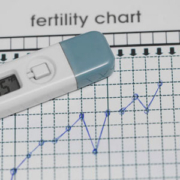Natural Fertility Doctor | Austin, TX
Common Fertility Myths
There are many myths out there, leading women to believe they are infertile while in reality, they are not. In addition, diagnostic tests are often costly, uncomfortable and even inaccurate. That is why it is of utmost importance that a woman learns how to chart their three fertility signs, so they can become active participants in their own health, decrease feelings of vulnerability, and increase chances of pregnancy. Moreover, women who chart their own fertility signs know their body better and can identify gynecological irregularities key to their overall health beyond any fertility issues.
Unfortunately, this “diagnosis of infertility” may or may not be true. A thorough understanding of what is necessary for pregnancy to occur should be available to all women who are trying to get pregnant and certainly to women who are having difficulty getting pregnant or believe they may have fertility problems.
If you have tried to become pregnant without success, Dr. Ruthie Harper opens her practice doors to you with compassion, and more than twenty years of natural fertility experience. Discover your personal path to total health, wellness and balance, and learn how the science of personalized integrative medicine can help you become pregnant and achieve your dream of growing your family.






